What is the Best Marketing Strategy for Restaurants? (Awesome plan)
A superior restaurant marketing strategy is absolutely crucial. Not only does it help you keep your current customers and attract […]
Read More »Become a successful marketing consultant: Learn more

Everyone knows what a website is.
Getting one developed today is easier than ever. And with new technologies developing almost daily, a website today has many uses.
But website marketing is a totally different topic.
Most designers don't understand website marketing and most business owners have too many responsibilities to fully grasp marketing strategies and tactics.
So, as we dig into the details of website marketing let’s review some simple definitions.
Dictionary.com defines a website as:
a connected group of pages on the World Wide Web regarded as a single entity, usually maintained by one person or organization and devoted to a single topic or several closely related topics.
And they define marketing as:
the total of activities involved in the transfer of goods from the producer or seller to the consumer or buyer, including advertising, shipping, storing, and selling.
With these wordy, clunky, complicated and not totally accurate definitions, it's no wonder people get website marketing wrong.
Let’s first clean this definition up, walk through some examples and then get you a solid website marketing plan that you can run with today.
First, lets define “website” and “marketing” defined by Your Strategic Marketing Partner:
Website: a digital location on the world wide web to communicate your message andor add value.
Marketing: To 1) Gain a customer, and 2) Keep a customer.
Simplify.
Onward.
While a website is constantly evolving, it’s core purpose is to attract and satisfy the wants and needs of your customers.
And in many cases, unless your website is 100% eCommerce, a website may be one line item in your marketing plan. We’ll discuss this in a few moments when we develop your plan.
To help you better understand the relationship between your website and how it fits with your marketing, let’s use the important marketing triad:
Your website is your media.
A website in marketing is a form of advertising media designed to gain a customer and keep a customer. A website is a digital representation of a business or organization. Since marketing’s job is to initially attract potential customers, a website is central to any digital marketing plan and important in offline marketing such as newspaper, TV and radio.
To market a website, there are two basic places to start.
First and most importantly is your customer.
-- These are all good starter questions.
For example, if your customers are 18-24 year-old college students who are lacrosse athletes, chances are high they will be tech savvy, prefer mobile transactions and like to communicate via social apps.
Alternatively, if you sell low glycemic, sugar substitute food products to mature, educated adults, chances are high they prefer convenient access to phone support and easy buying options on PC.
Now it's time to work backwards.
If we want to attract more of these customers, how do we market our website?
Start where these types of customers may be concentrated in groups large enough that our advertising can make an impact.
First, lets review the largest sources of online traffic:
Since they represent a large source of potential customers, let's look at Google for our lacrosse example.
One tool to advertise your business on Google is Google Ads.
Log into Google Ads and you can get a point of beginning for making a plan to market your website.
In Google Ads, navigate to Tools & Settings and then in the drop down click on Keyword Planner.

Then, click on “Get search volume and forecasts”:
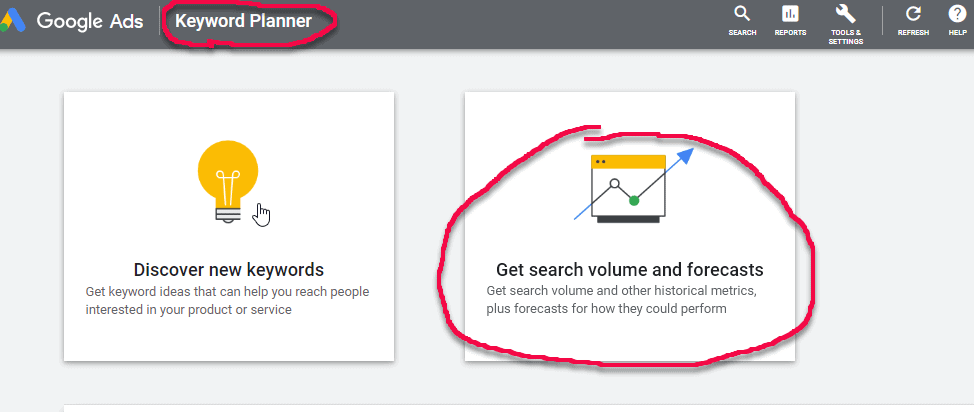
Then type in the first keyword:
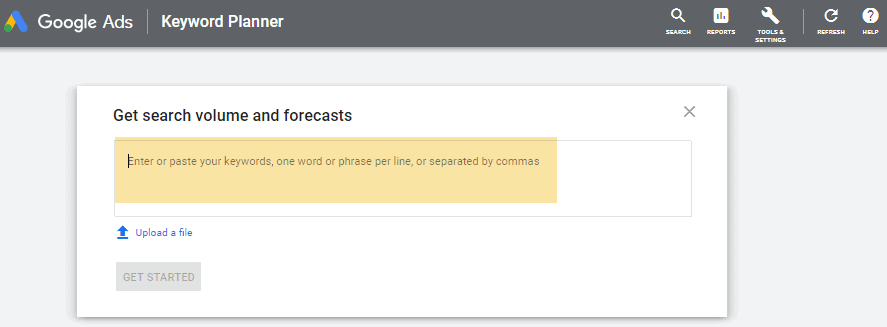
We are going to use our example of “lacrosse”:

So far, we can see that “lacrosse” has low competition and has a search volume of 100,000 - 1 million times per month. And you can advertise your website at a cost of between $0.48 - $2.02 per visitor.
Then we are going to click on the blue circle with the “+” and add a couple more keywords to see what some of these numbers look like:
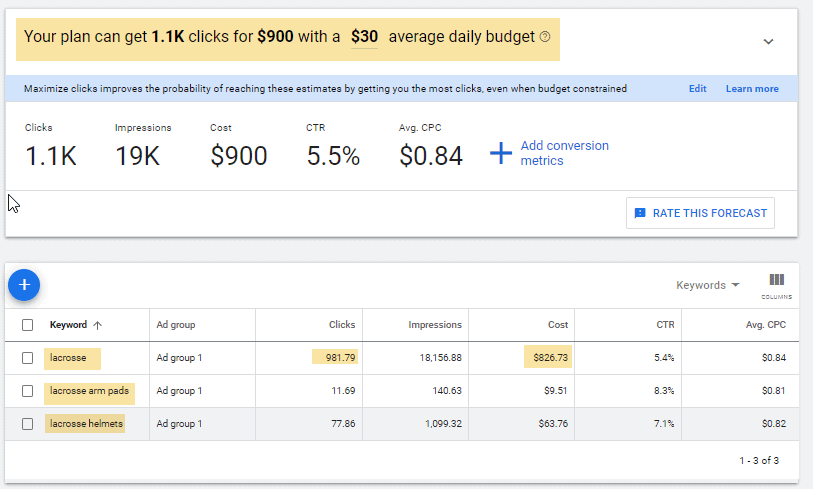
This tells us we can target market our website to specific Google users who are searching for lacrosse related items for $900 a month, which will send about 1,100 visitors to our site.
And finally, we are going to get a general idea of what device these users prefer and where geographically they are located.
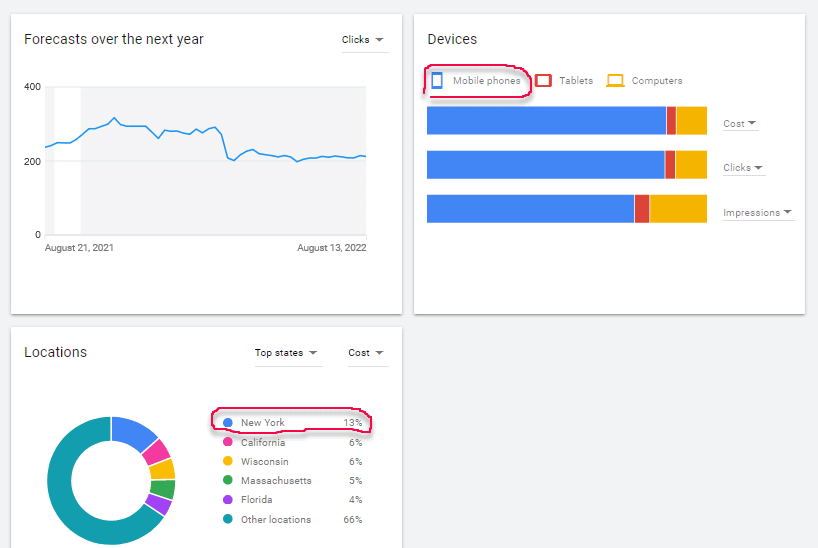
Ok, this is GREAT information. This is telling us that approximately 90% of all the traffic in this example is coming from mobile traffic. We also are learning that the traffic is fairly stable and predictable.
This tells us a lot of critical information we need to market our website.
But first, the big take-away should be that your website needs to be built for mobile first. If your site isn’t made for mobile first, you will be losing out on a lot of traffic and sales. So until your site is 100% mobile optimized, don’t even bother marketing your website in this scenario because everything you do will cost 2x, 3x or far more compared to your competition who will have a mobile friendly website.
The next big take-away is the traffic from these 3 key words. Notice that the more specific we are with the keywords, the less traffic we are going to get. But as a general rule, the more specific the keyword, the higher chances the person will be a buyer. Keep this in mind as you develop your marketing plan.
Lastly, the next big take-away is location.
Notice the largest concentration of this traffic is in New York.
Ok, let’s look at an example campaign and then put all this together in a simple website marketing plan that you can use to market your website.
To do an example of website marketing and only focus on sending targeted traffic, won’t do you justice. That’s because sending traffic to your website is only half of the equation. The other half is:
How does your traffic convert once they have landed on your website? Another way to say this is: how is the user experience once they land on you site?
Driving traffic and creating a great user experience are two very different topics, but intimately connected.
This tutorial is not about the user experience and conversion rates. We will address this in other tutorials. For more information about this important topic, go here: Website Marketing and Online Advertising.
Here’s a very simple example of marketing your website, that is, sending new targeted traffic to your site. This example campaign is a Google Ads responsive ad and is highly targeted to the related market that we are using for this example.
So, now in your Google Ads manager, click on Create Campaign:

Name your ad and set your daily budget:
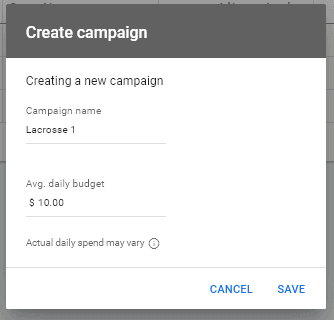
Click save and then see your next months forecast for your traffic and cost:
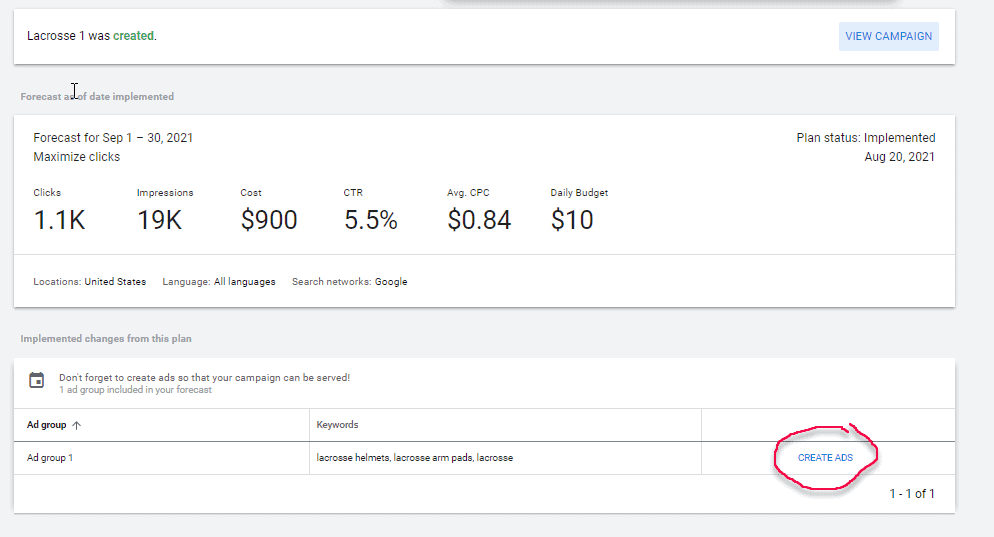
Then, create your ad:
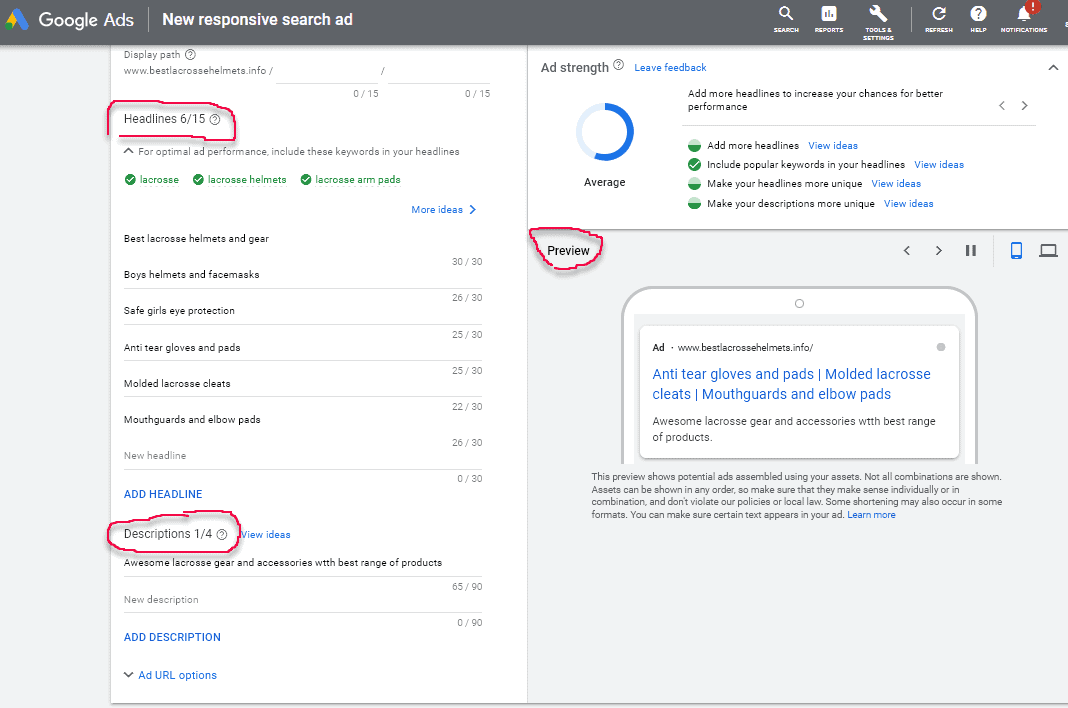
When you create your ad, the more information the better. It is a good idea to create an offline document with all your benefits and best product features so you can add them into your headline and description information.
Aim to make a full robust ad that Google likes. Also notice the preview as this is how it will look to your potential customers before they click on your ad and go to your website.
Once you are done with your ad, click save and let Google start sending traffic to you.
After a few days, you will have some great information to help you make better marketing decisions.
Let’s now bring all this together and develop some structure to your website marketing plan.
Your website marketing plan will consist of four main components:
In this sample website marketing plan, we are going to keep it very very simple.
+++++++
What is a website marketing plan?
A website marketing plan is the structure for how you will send new and existing customers to your website. The focus of any marketing activity is always the customer. When the customer persona and behaviors are clearly defined, then the marketing plan can be developed. Typical website marketing activities consist of online and offline activities such as pay per click advertising, retargeting, shopping sites, social media, PR, video, email, print and direct mail advertising.
+++++++
You can literally build your plan in a simple google document so you and your team have an organized look at the marketing activities that make up your plan.
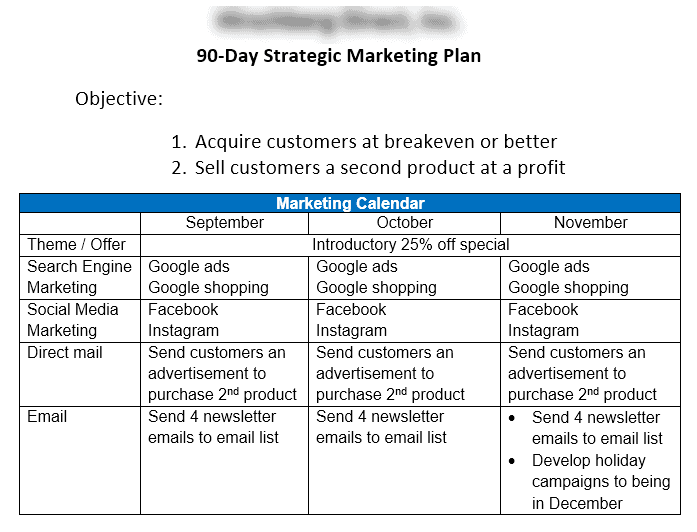
This simple framework will help you stay organized and let you see the action steps needed to stay on top of your most important action steps. Additionally, in your down time you can even get started on marketing activities so they are ready for the month ahead.
As always, if you need any help along the way, Your Strategic Marketing Partner is happy to help.